#leucin
Explore tagged Tumblr posts
Text
"Our study shows that dialing up your protein intake in pursuit of better metabolic health is not a panacea. You could be doing real damage to your arteries," said senior and co-corresponding author Babak Razani, M.D., Ph.D., professor of cardiology at Pitt. "Our hope is that this research starts a conversation about ways of modifying diets in a precise manner that can influence body function at a molecular level and dampen disease risks." The study, which combined small human trials with experiments in mice and cells in a Petri dish, showed that consuming over 22% of dietary calories from protein can lead to increased activation of immune cells that play a role in atherosclerotic plaque formation, driving the disease risk. Furthermore, the scientists showed that one amino acid - leucine - seems to have a disproportionate role in driving the pathological pathways linked to atherosclerosis, or stiff, hardened arteries.
#protein#metabolism#atherosclerosis#health#science#diet#nutrition#healthcare#healthy eating#healthy living#health and wellness#leucin
3 notes
·
View notes
Text
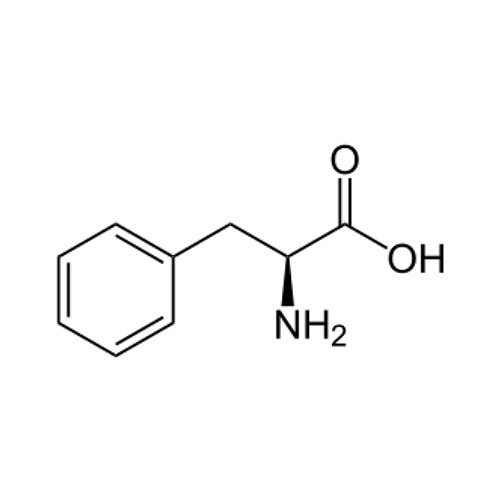
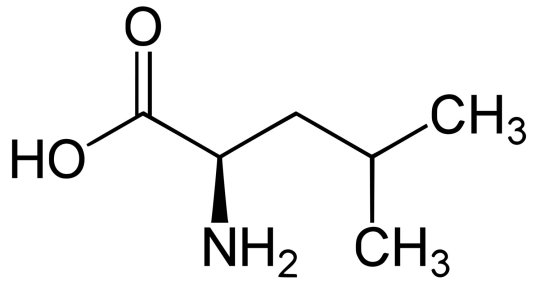
Aminoacid Swag Tournament Round 1
58 notes
·
View notes
Note
“ if it feels like a trap, you’re already in one. ”

Smartass. Leucine's eyes narrow at this stranger who approaches them now. He smells like death, and his feathers remind them of Scraps, who flutters his own wings at the sight of someone else.
Despite where the siren now dangles from the rope trap, they still manage to give the other a gesture that anyone would consider rude.
" Unfortunately, my companion isn't the most adept at noticing such things. " The voice, exasperated and reedy, comes from the crow above Leucine. " You wouldn't happen to be able to cut them down, would you? There's a gold coin in it for you if you do. I tire of hearing their hissing at passersby. "
2 notes
·
View notes
Text
Figure 24.7 shows the analysis of a polypeptide hydrolysate by ion-exchange chromatography.
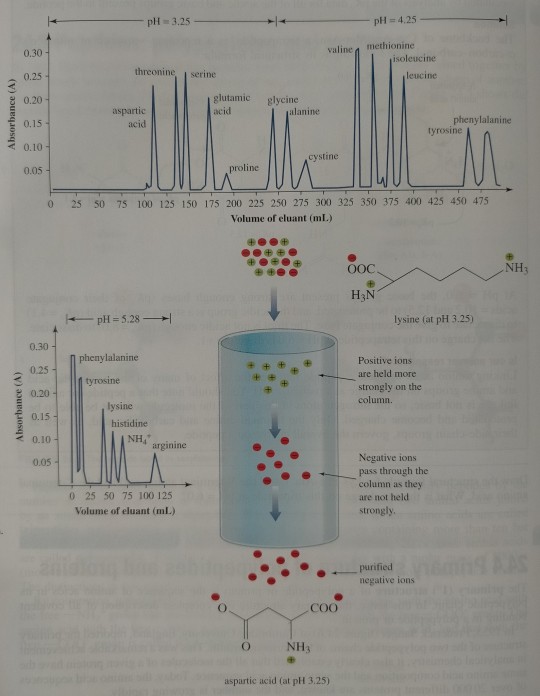
FIGURE 24.7 Analysis of a mixture of amino acids by ion-exchange chromatography using Amberlite IR-120, a sulfonated polystyrene resin. The resin contains phenyl-SO3-Na+ groups. The amino acid mixture is applied to the column at low pH (3.25), conditions under which the acidic amino acids (Asp, Glu) are weakly bound to the resin and the basic amino acids (Lys, His, Arg) are tightly bound. Sodium citrate buffers of two different concentrations and three different values of pH are used to elute the amino acids from the column. Cysteine is determined as cystine, Cy-S-S-Cys, the disulfide of cysteine.
"Chemistry" 2e - Blackman, A., Bottle, S., Schmid, S., Mocerino, M., Wille, U.
#book quotes#chemistry#nonfiction#textbook#polypeptide#hydrolysate#ion exchange#chromatography#resin#amino acid#aspartic acid#threonine#serine#glutamic acid#proline#glycine#alanine#cystine#valine#methionine#isoleucine#leucine#tyrosine#phenylalanine#cysteine#ions#amberlite
5 notes
·
View notes
Text

Yes, that particular meme
#leucine s naturae#cysteine chappelle#oc#lesbian#drawing#meme#booba#face in booba#yes#i regret nothing
4 notes
·
View notes
Photo

Too Small Intestines
The rarity of some genetic disorders can make them difficult to study in patients. An animal model that replicates some of the disease mechanisms can help researchers, and a new study has developed the first zebrafish model for Feingold syndrome type 1, which causes incomplete development of the gastrointestinal tract among other symptoms. The condition is caused by mutations in the gene Mycn (stained green, active throughout the intestines of healthy fish, pictured). The mutant fish developed short intestines with reduced folding, and the deletion of Mycn impacted other genes as well, including those in a central regulator of protein synthesis, the mTOR signalling pathway. Supplementation with leucine, a building block that activates the mTOR pathway, helped restart protein synthesis and led to a partial recovery of intestine size. If the mechanisms translate to human biology, this simple supplement could bring relief to patients with Feingold syndrome type 1.
Written by Anthony Lewis
Image from work by Yun-Fei Li, Tao Cheng and colleagues
Zhejiang University School of Medicine, Hangzhou, China
Image originally published with a Creative Commons Attribution 4.0 International (CC BY 4.0)
Published in PLOS Biology, November 2022
You can also follow BPoD on Instagram, Twitter and Facebook
#science#biomedicine#intestines#gut#immunofluorescence#feingold syndrome#genetic disorders#mtor#leucine
6 notes
·
View notes
Text

Safety Information:
Consult your physician in case you are taking any other medication before consuming this product.
Ingredients:
L-Leucine, L-Isoleucine, L-valine, L-Glutamine, Maltodextrin powder, L-Taurine, L-Citrulline,
#Ingredients:#L-Leucine#L-Isoleucine#L-valine#L-Glutamine#Maltodextrin powder#L-Taurine#L-Citrulline#BCAA Supplements
0 notes
Note
If you take character song suggestions, i offer Siamés - The phoenix for Macaque
ooooooooh 👀 yeah i definitely see this fitting Macky post-s4
youtube
#also!!! it was recorded in Texas 🥰🥰🥰🥰🥰#this is a fun song and the melody is so pretty#the fact that there is a black cat in the leucine video did amuse me 🤭 since Macky likes to act like one#lmk#asks#lmk six eared macaque
0 notes
Link
0 notes
Text
The Role of Amino Acids in the Keto Diet: Unlocking the Key to Optimal Health
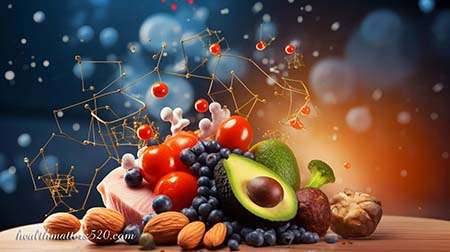
Are you interested in the relationship between amino acids and the ketogenic diet? The keto diet has gained significant popularity due to its effectiveness in weight loss and overall health improvement. Amino acids, as the fundamental building blocks of proteins, play a crucial role in achieving and maintaining ketosis, the metabolic state that characterizes the keto diet. Understanding the connection between amino acids and ketosis can help optimize the benefits of this dietary approach. In this article, we will explore the significance of amino acids in the keto diet and how they contribute to its success.
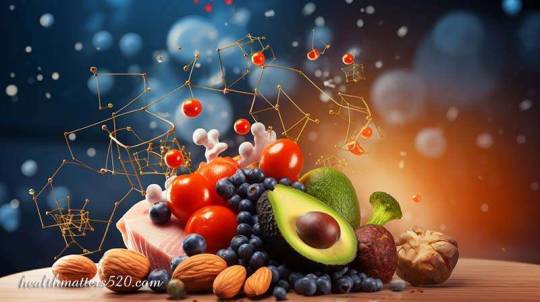
Understanding Amino Acids and Ketogenic Amino Acids
To comprehend the relationship between amino acids and the ketogenic diet, it's essential to grasp the basics of amino acids. Amino acids are the building blocks of proteins, and they are classified into three types: essential, non-essential, and conditional. Essential amino acids are those that our bodies cannot produce on their own, so we need to obtain them from our diet. Non-essential amino acids, on the other hand, can be synthesized by our bodies. Conditional amino acids are usually non-essential, but under certain conditions (such as illness or stress), they become essential. Ketogenic amino acids are a specific group of amino acids that have metabolic pathways leading to the production of ketone bodies. Ketone bodies are molecules produced during the breakdown of fatty acids, and they serve as an alternative source of energy when glucose is limited. These amino acids can be degraded into acetyl-CoA, a key component in ketone body production. Understanding the role of ketogenic amino acids is crucial in the context of the ketogenic diet, as they provide an additional source of fuel for the body to enter and maintain a state of ketosis. This metabolic state is characterized by elevated ketone levels and a shift from glucose to fat metabolism.
The Science Behind Amino Acids and the Ketogenic Diet
Scientific research provides substantial evidence supporting the connection between amino acids and the ketogenic diet. One study published in ScienceDirect explored the role of ketogenic amino acids in promoting ketosis and its benefits for overall health. Specific amino acids, such as lysine and leucine, have been found to play a crucial role in energy production and weight loss during ketosis. Lysine, for example, is involved in the synthesis of carnitine, a molecule that helps transport fatty acids into the mitochondria for energy production. Leucine, on the other hand, stimulates protein synthesis and supports muscle growth, which is particularly important during weight loss. Another study published in PubMed Central focused on amino acid metabolism in ketogenesis and its potential role in nutritional neurotoxicity. It highlighted how the metabolism of amino acids, including both ketogenic and glucogenic amino acids, contributes to the production of ketone bodies for energy during the ketogenic diet. Understanding the science behind amino acids and their impact on the ketogenic diet can provide valuable insights into optimizing energy production, weight loss, and overall health during ketosis.
Benefits of Ketogenic Amino Acids in the Keto Diet
Incorporating ketogenic amino acids into a keto diet plan can offer several potential benefits for individuals following this dietary approach. These amino acids can enhance weight loss, improve metabolic health, and support muscle growth. Ketogenic amino acids, such as lysine and leucine, have been found to promote weight loss by increasing fat oxidation and reducing appetite. By stimulating the breakdown of fatty acids and the production of ketone bodies, these amino acids can help individuals reach and maintain a state of ketosis, leading to more efficient fat burning. Furthermore, ketogenic amino acids play a role in improving metabolic health. They can support insulin sensitivity, which is crucial for regulating blood sugar levels and preventing insulin resistance. This can be particularly beneficial for individuals with metabolic disorders or those at risk of developing type 2 diabetes. Additionally, these amino acids contribute to muscle growth and preservation. Leucine, in particular, activates protein synthesis and helps maintain muscle mass during weight loss. By supporting lean muscle retention, ketogenic amino acids can assist in achieving a toned and fit physique. By incorporating ketogenic amino acids into a keto diet plan, individuals can potentially experience enhanced weight loss, improved metabolic health, and better muscle growth and preservation.
Practical Tips for Including Ketogenic Amino Acids in Your Diet
Incorporating foods rich in ketogenic amino acids into a keto meal plan can be a great way to optimize your dietary intake. Here are some practical tips for including these amino acids in your diet:

- Focus on Protein Sources: Choose high-quality protein sources that are rich in ketogenic amino acids. Foods like meat, poultry, fish, eggs, and dairy products are excellent choices. Opt for lean cuts of meat and fish, and consider including plant-based protein sources like tofu and tempeh for variety. - Emphasize Lysine-Rich Foods: Lysine is an essential amino acid that plays a crucial role in the ketogenic diet. Include lysine-rich foods such as lean meats, fish, poultry, legumes (like beans and lentils), quinoa, and dairy products like Greek yogurt and cottage cheese. - Incorporate Leucine-Rich Foods: Leucine is another important ketogenic amino acid that supports muscle growth and protein synthesis. Include foods like lean beef, chicken breast, tuna, salmon, eggs, and dairy products in your meals to ensure an adequate intake of leucine. - Consider Amino Acid Supplementation: If you struggle to meet your amino acid needs through diet alone, consider amino acid supplementation. Consult with a healthcare professional or nutritionist to determine the appropriate dosage and type of amino acid supplement for your specific needs. - Experiment with Keto-Friendly Recipes: Explore keto-friendly recipes that incorporate foods rich in lysine, leucine, and other essential amino acids. For example, you can try grilled chicken or fish with a side of steamed vegetables, or a Greek yogurt parfait topped with nuts and seeds for added protein. By following these practical tips, you can ensure that your keto diet includes an adequate amount of ketogenic amino acids, promoting optimal health and achieving your goals. Note: It is always recommended to consult with a healthcare professional or nutritionist before making any significant changes to your diet or incorporating supplements.
Conclusion
In the context of the ketogenic diet, amino acids play a crucial role as the building blocks of proteins and key contributors to achieving ketosis. Incorporating ketogenic amino acids into your keto diet can offer numerous potential benefits, including enhanced weight loss, improved metabolic health, and support for muscle growth. By focusing on protein sources rich in lysine, leucine, and other essential amino acids, you can optimize your amino acid intake within the context of a keto meal plan. Additionally, considering amino acid supplementation under the guidance of healthcare professionals or nutritionists can help ensure you meet your specific needs. It is important to remember that individual requirements may vary, and personalized advice from healthcare professionals or nutritionists is invaluable. They can provide tailored guidance and support to help you implement amino acids into your keto diet effectively and safely. By understanding the significance of amino acids and seeking professional guidance, you can maximize the potential benefits of incorporating ketogenic amino acids into your keto diet, supporting your overall health and weight loss journey.
FAQ
Are all amino acids ketogenic? No, not all amino acids are ketogenic. Some amino acids are considered glucogenic, meaning that they can be converted into glucose for energy. Ketogenic amino acids, on the other hand, can be broken down into ketone bodies, which are used as an alternative source of energy during ketosis. Can I get enough amino acids on a ketogenic diet without supplementation? Yes, it is possible to get enough amino acids on a ketogenic diet without supplementation. By incorporating protein-rich foods such as meat, poultry, fish, eggs, and dairy products into your diet, you can meet your amino acid requirements. However, if you have specific nutritional needs or struggle to meet your amino acid needs through food alone, consulting with a healthcare professional or nutritionist about supplementation may be beneficial. Are there any risks or side effects associated with amino acid supplementation on a keto diet? Amino acid supplementation is generally considered safe when used appropriately. However, it is important to consult with a healthcare professional or nutritionist before starting any supplementation regimen. Excessive amino acid intake may have potential side effects, such as digestive issues or imbalances in other nutrients. Proper dosage and individualized advice can help minimize risks and ensure safe and effective supplementation. Can amino acid supplementation help with muscle building on a ketogenic diet? Yes, amino acid supplementation can support muscle building on a ketogenic diet. Amino acids, especially leucine, play a crucial role in stimulating protein synthesis and supporting muscle growth. By ensuring an adequate intake of essential amino acids, individuals on a keto diet can support their muscle-building goals. Can amino acids help with weight loss on a ketogenic diet? Amino acids, particularly those that are ketogenic, can potentially aid in weight loss on a ketogenic diet. Ketogenic amino acids contribute to the production of ketone bodies, which can increase fat burning and promote weight loss. Additionally, protein-rich foods that provide essential amino acids can help increase satiety and support appetite control, which can aid in weight management. However, it is important to maintain an overall balanced and calorie-controlled diet for successful weight loss. Read the full article
0 notes
Text
Scientists make advancements in the detection of voice disorders using adversarial continual learning

- By InnoNurse Staff -
Voice disorders encompass various conditions like dysphonia, paralysis, cysts, and even cancer, which result in abnormal vibrations in the vocal cords or vocal folds.
Read more at Gwangju Institute of Science and Technology/Tech Xplore
///
Other recent news and insights
Leucine aims to simplify drug manufacturing compliance (TechCrunch)
#voice technology#ai#artificial intelligence#pathology#medtech#health tech#leucine#manufacturing#pharma#machine leaning#compliance
0 notes
Text
mTOR
"Under nutrient-rich conditions mTORC1 promotes cell growth by stimulating biosynthetic pathways, including synthesis of proteins, lipids and nucleotides, and by inhibiting cellular catabolism through repression of the autophagic pathway.
"The convergence point of anabolic and catabolic processes is the mechanistic target of rapamycin (mTOR), which senses fluctuations in extracellular and intracellular nutrients to modulate cellular growth, metabolism and survival.
"Cellular demands for amino acids are cell- and tissue-specific; while glutamine is an important energy source feeding the tricarboxylic acid (TCA) cycle particularly in glycolysis-dependent tumour cells [41], arginine influx and arginase levels are tightly regulated in liver for the urea cycle [42].
"Leucine, glutamine and arginine have been widely shown as the main contributors to mTORC1 activation [43–47]. In particular, glutamine, in addition to serving as a key energy source, cooperates with leucine to activate mTORC1. Glutamine can be deaminated to produce α-ketoglutarate, which is both an intermediate in the TCA cycle and a regulator of mTORC1 activity and autophagy. However, this reaction requires the presence of leucine, which acts as a cofactor of the enzyme that catalyses the last step of glutaminolysis [48].
"It is now clear that cellular homoeostasis of metabolism and growth is exquisitely controlled by the coordination of AMPK and mTORC1. AMPK is crucial to the cellular response to low energy levels and, once active, drives processes which will replenish cellular energy stores, such as autophagy while inhibiting biogenic synthesis [116]. Opposite to AMPK, activated mTORC1 shifts the metabolic programme of the cell from catabolic to anabolic metabolism by up-regulating the synthesis of building blocks for cell proliferation, including proteins, lipids and nucleotides [117].
"Whereas the role of amino acids as key signal factors in the activation of mTORC1 has been accepted, to date, the inhibitory effect of amino acids on AMPK has been a debatable issue. Some studies have observed the inhibition of AMPK by amino acids [124–126], though this has not always been the case [127,128]. A recent work suggests amino acids as novel metabolic activators of AMPK. In this study, AMPK responded acutely and within 1 min to amino acid and its activation was independent of mTORC1 [129]. ... Furthermore, they demonstrate that AMPK activation occurs via the Ca2+/calmodulin-dependent kinase kinase-β (CaMKKβ) and that activation of the CaMKKβ–AMPK axis by amino acids does not inhibit mTORC1 but sustains autophagy."

0 notes
Note
💯 What is my muse’s ideal date? / for leucine!
you: a nice looking but naive land-dweller with glittering accessories. lucy: a hungry siren who you see in the water from your place on your ship. you're drawn to him and try to get to know him better, and he rewards you by dragging you under the water and drowning you! <3
2 notes
·
View notes
Text
By 1964, all 64 codons had been deciphered (table 25.4). (...) Several features of the genetic code are evident from a study of table 25.4.
Only 61 triplets code for amino acids. The remaining three (UAA, UAG and UGA) are signals for chain termination; they signal to the protein-synthesizing machinery of the cell that the primary sequence of the protein is complete. The three chain termination triplets are indicated in the table by 'Stop'.
The code is degenerate, which means that several amino acids are coded for by more than one triplet. Only methionine and tryptophan are coded for by just one triplet. Leucine, serine and arginine are coded for by six triplets, and the remaining amino acids are coded for by two, three or four triplets.
For the 15 amino acids coded for by two, three or four triplets, it is only the third letter of the code that varies. For example, glycine is coded for by the triplets GGA, GGG, GGC and GGU.
There is no ambiguity in the code, meaning that reach triplet codes for only one amino acid.
AUG is the initiation signal, and it is also the codon for the amino acid methionine. In all protein synthesis, the first amino acid placed is always methionine.

"Chemistry" 2e - Blackman, A., Bottle, S., Schmid, S., Mocerino, M., Wille, U.
#book quotes#chemistry#nonfiction#textbook#codon#triplet#amino acid#rna#mrna#ribonucleic acid#phenylalanine#leucine#isoleucine#methionine#valine#serine#proline#threonine#alanine#tyrosine#stop#histidine#glutamine#asparagine#lysine#aspartic acid#glutamic acid#cysteine#tryptophan#arginine
1 note
·
View note
Text

it is practice ok
2 notes
·
View notes
